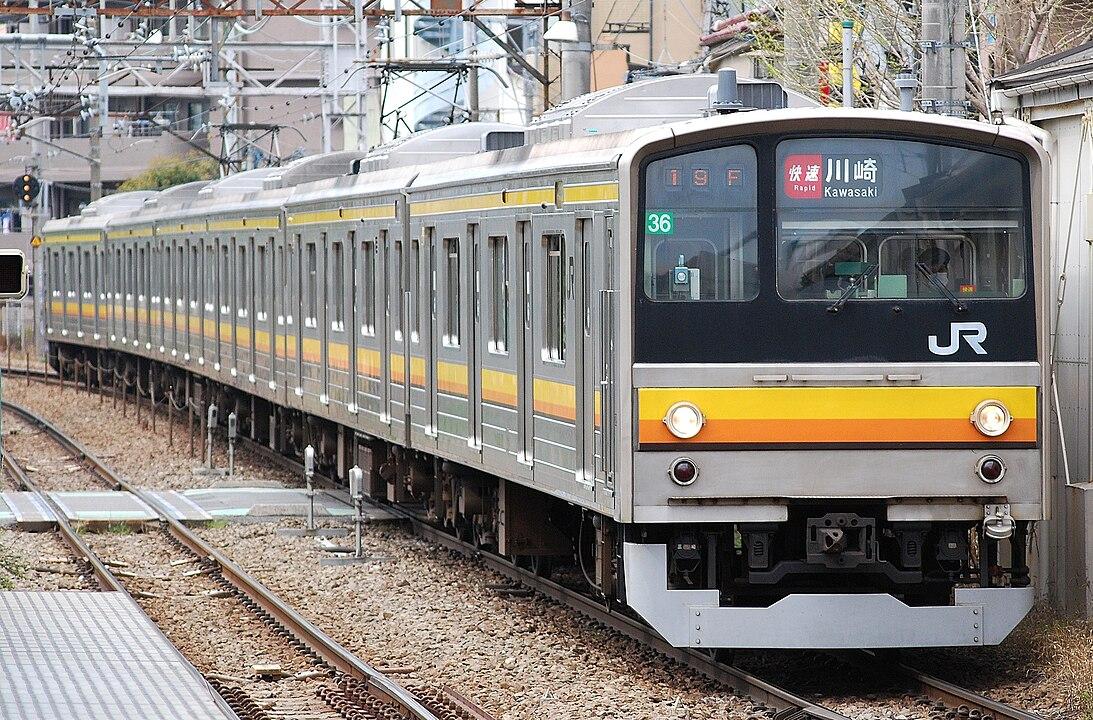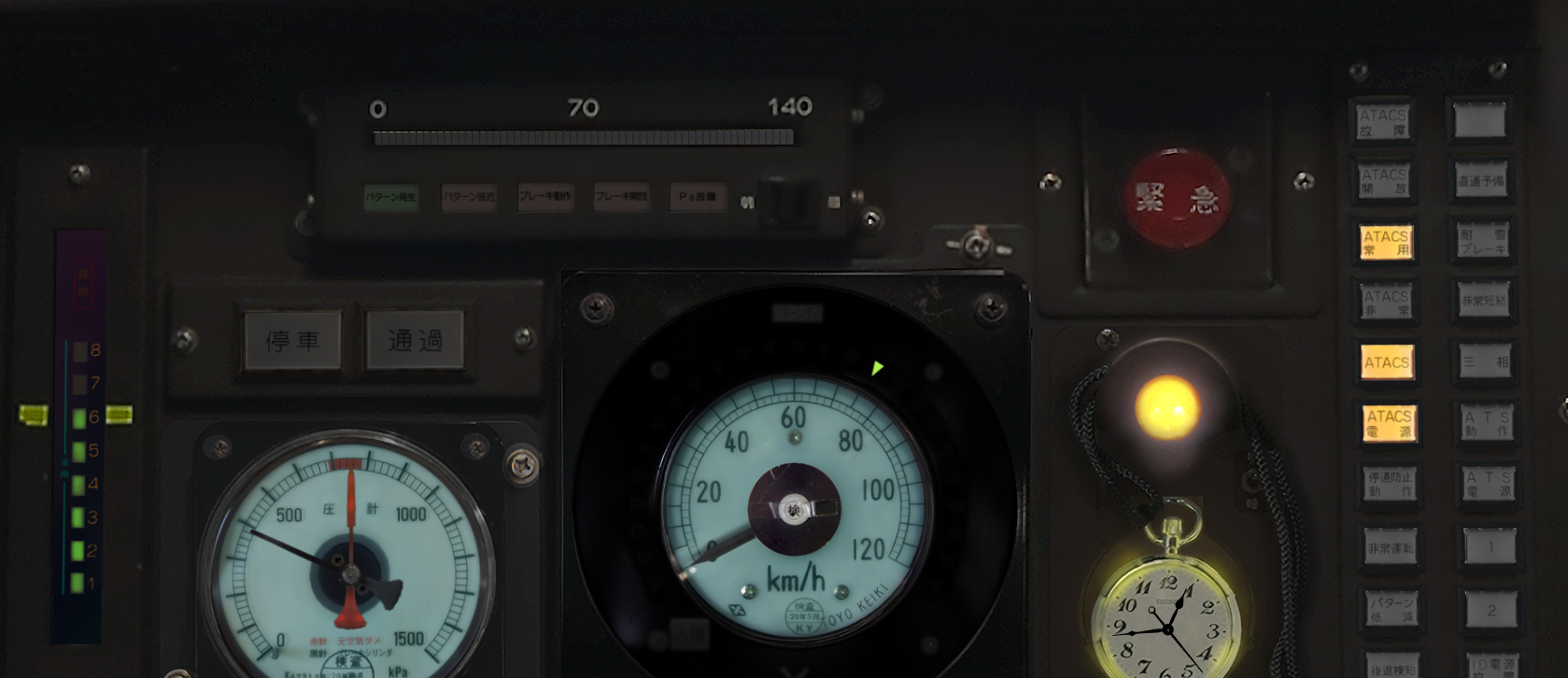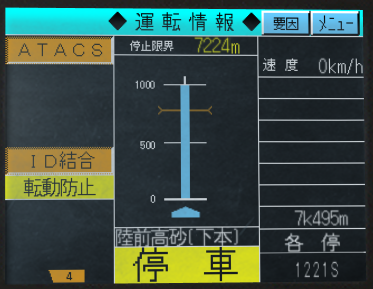205 Series

Presentation
The 205 series (205系, 205-kei) (205けいでんしゃ/205 keidensha or 205系電車) is a type of electric multiple unit (EMU), used for commuter and suburban services, introduced in 1985 by Japan National Railways (JNR), and currently operated by East Japan Railway Company (JR East) in Greater Tokyo, West Japan Railway Company (JR West) in Keihanshin, and KAI Commuter in Indonesia.
This model appeared in 1985, at the end of the JNR period, as an energy-efficient commuter train to replace the 103 and 201 series, and even after the division and privatization of JNR, JR East and JR West continued to increase the number of cars via orders, and eventually 1,461 cars were produced.
Console detail
Senseki line (ATS-Ps + ATACS)

On the far left, we have the brake levels, with a yellow line on level 6 to indicate the level to apply when stopping and indicator for emergency brake in red (非常).
Then, at the top, we have the ATS-Ps display.
Below, on the left, 2 lights (unused) to indicate whether the next station is a stop (on the left - 停車) or just a passage (on the right - 通過). Still below, we have the brake pressure level (black arrow) and the compressed air reservoir (red arrow). Then we have the speed dial with the green ATACS speed limit indicators (and the light above telling us to brake if the limit is dropping, if it's on).
Then comes the lock indicator and the pocket watch.
Finally, we have various indicators for ATACS and ATS:
|
|
ATACS screen

The single screen contains some information about the line, when you're on the section using ATACS.
The left-hand column contains no relevant information.
The middle column contains several items of information:
- the distance to the next stop signal (not the distance to the next station stop)
- The next kilometer ahead. A white rectangle on the right means a station. An orange line means a level crossing.
- The name of the next station (here Rikuzen-Takasago/陸前高砂).
- The stop or passage indication for the next station.
Finally, the last column displays, from top to bottom, the current speed, distance travelled, type of journey and train number.
Nambu/Tsurumi line (ATS-P)
On the far left, we have the brake levels with an indicator for emergency brake in red (非常).
On the left, we have several indicators on the top part, and at the bottom part, we have the brake pressure level (black arrow) and the compressed air reservoir (red arrow). Then we have the speed dial.
At the center comes the door lock indicator and the pocket watch.
On the right we have the ATS-P panel and the train protection radio equipment.
Here is the translation of the indicators (those on the left):
- First line :
- 3-phases (三相)
- Emergency short-circuit (非常短絡)
- Snow resistant brakes (耐雪ブレーキ)
- Second line:
- 1
- Home confirmation (left) (ホーム確認「左」)
- Home confirmation (right) (ホーム確認「右」)
- Safety Brakes (直通予備)
Consult the MON/TIMS/INTEROS screen page for more details about the TIMS screen.
Availability
This model is available on these lines:
- Senseki line (205-3100 version)
- Nambu branch line (205-1000 version)
- Tsurumi line (205-1100 version)

